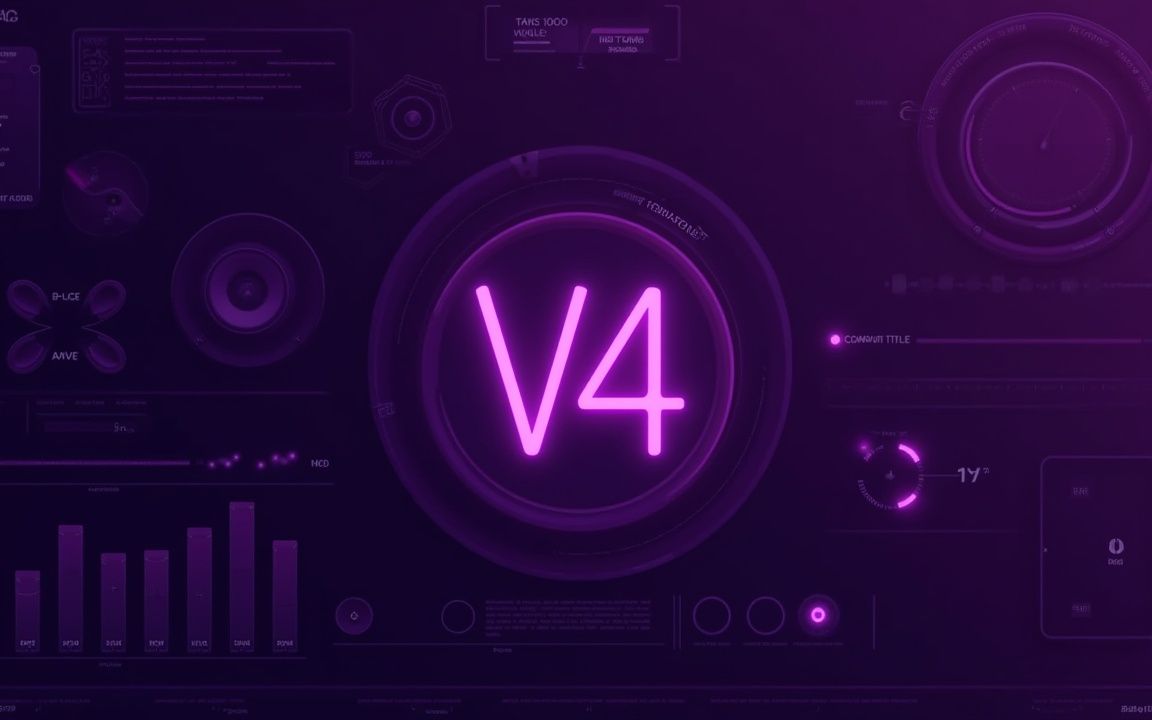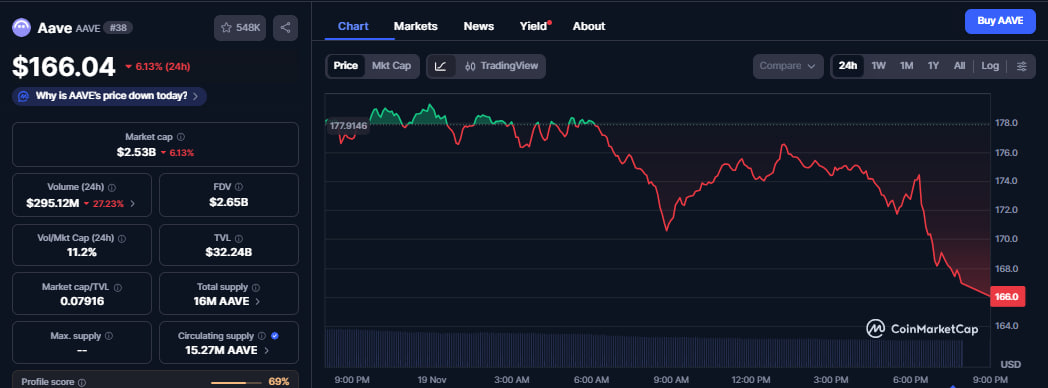
- The upgrade introduces unified Liquidity Hubs to replace fragmented markets.
- Spokes introduces modular lending setups with independent risks.
- V4 aims to enhance capital efficiency and open new grounds for developers.
Lending protocol Aave is preparing for one of its most ground-breaking upgrades.
Two days after unveiling a mobile savings app , the team has released the update’s testnet, signalling progress towards Aave V4, which aims to change how liquidity moves within the protocol.
Aave V4 testnet, featuring a developer preview of our new interface, Aave Pro, is now live. pic.twitter.com/q7ltPy0pxC
— Aave (@aave) November 19, 2025
V4 will replace the common multi-market system with an innovative, unified “Hub and Spoke” architecture.
The version 4 update aims to transform how decentralized finance lending works, prioritising developers looking to launch risk markets or experiment with assets that do not perfectly fit into Aave’s current structure.
The official blog highlighted:
Each L1 or L2 will have at least one Aave V4 Liquidity Hub, with the potential for multiple Hubs per network. Spokes allow for greater experimentation within these ecosystems without liquidity becoming a limiting factor. This design makes it easier to support new risk profiles and enable innovation without fragmenting liquidity, while also providing a way to seed liquidity for new Spokes.
To understand why the V4 upgrade matters, let’s check how Aave V3 operates and the challenges that pushed the team to seek a flexible model.
A glance at Aave V3
Each market works independently in Aave version 3.
Deployments like Ethereum Prime and Ethereum Core maintain their own asset lists and liquidity pools.
Individuals supply to a definite market, and they can only borrow from that avenue.
While this structure is helpful for risk separation, it creates some crucial limitations.
For instance, liquidity stuck in a certain market cannot support borrowing in another.
Also, building new markets requires bootstrapping funds from scratch.
That slows adoption while fragmenting the entire user base.
Further, governance becomes challenging and experimentation heavier as each distinct market requires its unique pool.
The Aave team added:
It also limits economies of scale for borrowing and makes it harder to support novel assets or implement unique borrow configurations, which end up siloed and harder to use.
A unified Liquidity Hub to replace independent markets
Meanwhile, version 4 overhauls the Aave lending ecosystem with a Liquidity Hub, which is a shared pool comprising assets for the whole platform.
The innovative Hub serves as the only source of liquidity, ensuring that borrowers and suppliers leverage the same capital base, replacing segmented ones.
Most importantly, users will not interact with the Hub directly, though all deposits will eventually end up there.
The Hub handles everything, including interest calculations, accounting, and borrowing limits.
Each L1 or L2 platform can host at least one Hub, except chains with specialised needs or massive traffic.
The team expects this consolidation to substantially enhance capital efficiency by reducing idle liquidity and enriching borrowing conditions.
AAVE outlook
Aave’s native token displayed significant selling pressure on its daily chart.
It lost more than 6% the past 24 hours to $166.

The 27% dip in daily trading volume confirms bearish sentiment in AAVE.
Meanwhile, its downward stance coincides with the broader weakness.
The global cryptocurrency market cap declined by over 4% the past day to $3.04 trillion as Bitcoin plummeted below $90,000, trading at $89,478.

